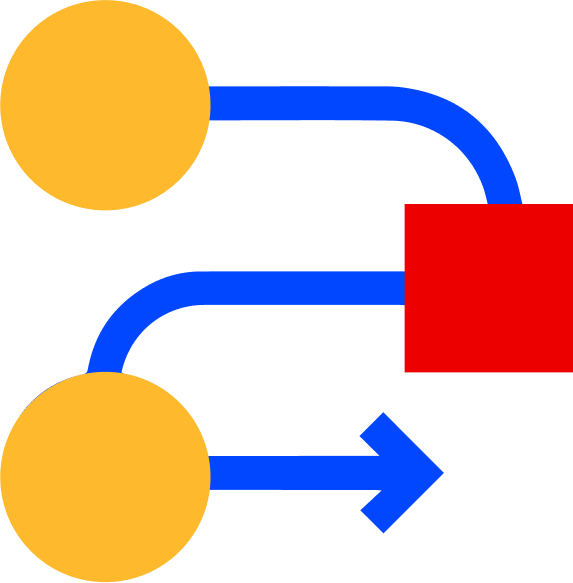Legal Holds vs. Litigation Holds: Key Differences and Implementation Strategies


Legal holds are the formal processes by which an organization preserves relevant information when litigation is reasonably anticipated, whereas a litigation hold is the specific phase when actual litigation or investigation is underway and data preservation becomes mandatory. Understanding both ensures effective data preservation strategies, proper hold implementation methods, and robust litigation readiness.
Have you ever wondered how your company can avoid penalties for failing to preserve crucial data when a dispute arises? That's where a strong legal hold and litigation hold process come into play.
So, let's look at what triggers each type of hold, how they differ in scope and timing, and how information governance software supports effective risk management in holds for full legal compliance solutions.
What Does Legal Hold Mean?
A legal hold protects information that could be needed for an investigation or legal action. There are three main parts of a legal hold:
- Definition and purpose
- Management and responsibility
- Role of information governance software
Definition and Purpose
A legal hold is a notice sent within an organization that instructs employees to preserve specific data. It can include:
- Emails
- Documents
- Text messages
- Any electronically stored information
The process starts when legal action is reasonably expected, even before a lawsuit begins. The main goal is to protect data from loss or alteration for review later if needed.
Management and Responsibility
Usually, the legal department issues and monitors legal holds. They work closely with department leaders and IT teams to identifythe location of relevant data.
Clear communication helps employees understand what they must preserve and how long the hold will last. A strong process reduces confusion and supports compliance.
Role of Information Governance Software
Many organizations use information governance software to automate the legal hold process. These tools send notifications, track acknowledgments, and create reports.
They also help with data preservation strategies by identifying systems or accounts that might contain relevant information. Using software helps maintain consistency, accuracy, and accountability during the hold.
What Is the Difference Between a Legal Hold and a Litigation Hold?
A legal hold and a litigation hold share a connection, but they serve different purposes in the process of data preservation. Knowing these differences helps organizations stay compliant and protect themselves from unnecessary risk.
There are three main distinctions between a legal hold and a litigation hold:
- Timing and initiation
- Purpose and scope
- Risk management and compliance
Timing and Initiation
A legal hold begins when a company reasonably expects a:
- Dispute
- Audit
- Investigation
It acts as a signal to preserve potential evidence before legal action officially starts.
A litigation hold begins once litigation is filed or clearly imminent. At that point, the process becomes more structured, and every related document must be preserved without delay. The difference in timing shapes how each hold is managed and who becomes involved.
Purpose and Scope
The legal hold process focuses on identifying, securing, and maintaining relevant data early in a potential dispute. It is broad, often covering multiple data sources and departments.
The litigation hold process narrows that focus to information directly connected to an active case. It requires closer supervision by legal counsel and tighter documentation to meet court expectations.
Risk Management and Compliance
Strong risk management in holds helps prevent penalties or claims of data spoliation. Organizations use legal compliance solutions to track every step of the litigation hold process.
These systems confirm that information stays protected, communications are documented, and data is released only when appropriate. This careful coordination supports transparency and strengthens trust in the organization's legal readiness.
Frequently Asked Questions
How Do Legal Holds Differ Across Industries?
Legal holds are shaped by the industry's regulations and data practices. A healthcare company must follow patient privacy rules under HIPAA, while a financial firm faces strict retention laws for client communications.
Manufacturing and technology companies often manage high volumes of engineering or product data. Each field has different standards, but all must prove that data preservation was handled correctly.
Understanding those differences helps organizations apply the legal hold process in a way that meets both internal and regulatory expectations.
What Role Does Technology Play in the Litigation Hold Process?
Technology helps manage the litigation hold process with greater accuracy. Information governance software allows legal teams to identify custodians, issue notices, and confirm compliance within one system.
These tools track every step, from the first notice to final release. They also provide reporting features that show when each person acknowledged the hold. Automation makes the process more reliable and reduces mistakes that can happen when handled manually.
How Can Organizations Train Employees on the Legal Hold Process?
Training builds awareness and accountability. Companies should include legal hold training as part of new employee onboarding and reinforce it through annual refreshers.
Simple guides or short videos help employees understand what to do when a notice is received. Managers play a role in reminding staff about data preservation responsibilities. Consistent training strengthens compliance and reduces confusion when a legal hold is issued.
What Happens if a Legal Hold Is Not Properly Implemented?
Failure to manage a hold can lead to lost evidence or noncompliance with court rules. This can result in fines, case sanctions, or damage to the company's reputation.
Poorly handled holds may also delay investigations or increase legal costs. Using clear communication and reliable systems lowers these risks. Organizations that take early action and track their efforts can better defend their data preservation strategies if questioned.
Legal Holds vs. Litigation Holds
Legal holds form the foundation of responsible data preservation. By understanding their purpose and how they differ from litigation holds, organizations can respond to legal matters with accuracy and confidence. A clear process supported by technology strengthens compliance, reduces risk, and promotes lasting trust in information governance practices.
Get in touch today to find out how we can help with your eDiscovery needs.
 eDiscovery
eDiscovery Collections
Collections Processing
Processing Early Case Assessment
Early Case Assessment Information Governance
Information Governance Data Migration
Data Migration Data Archiving
Data Archiving Platform Services
Platform Services Connectors
Connectors Platform API
Platform API Pricing Plans
Pricing Plans Professional Services
Professional Services Technical Support
Technical Support Partnerships
Partnerships About us
About us Careers
Careers Newsroom
Newsroom Reveal
Reveal Logikcull by Reveal
Logikcull by Reveal Events
Events Webinars
Webinars OnnAcademy
OnnAcademy Blog
Blog Content Library
Content Library Trust Center
Trust Center Developer Hub
Developer Hub